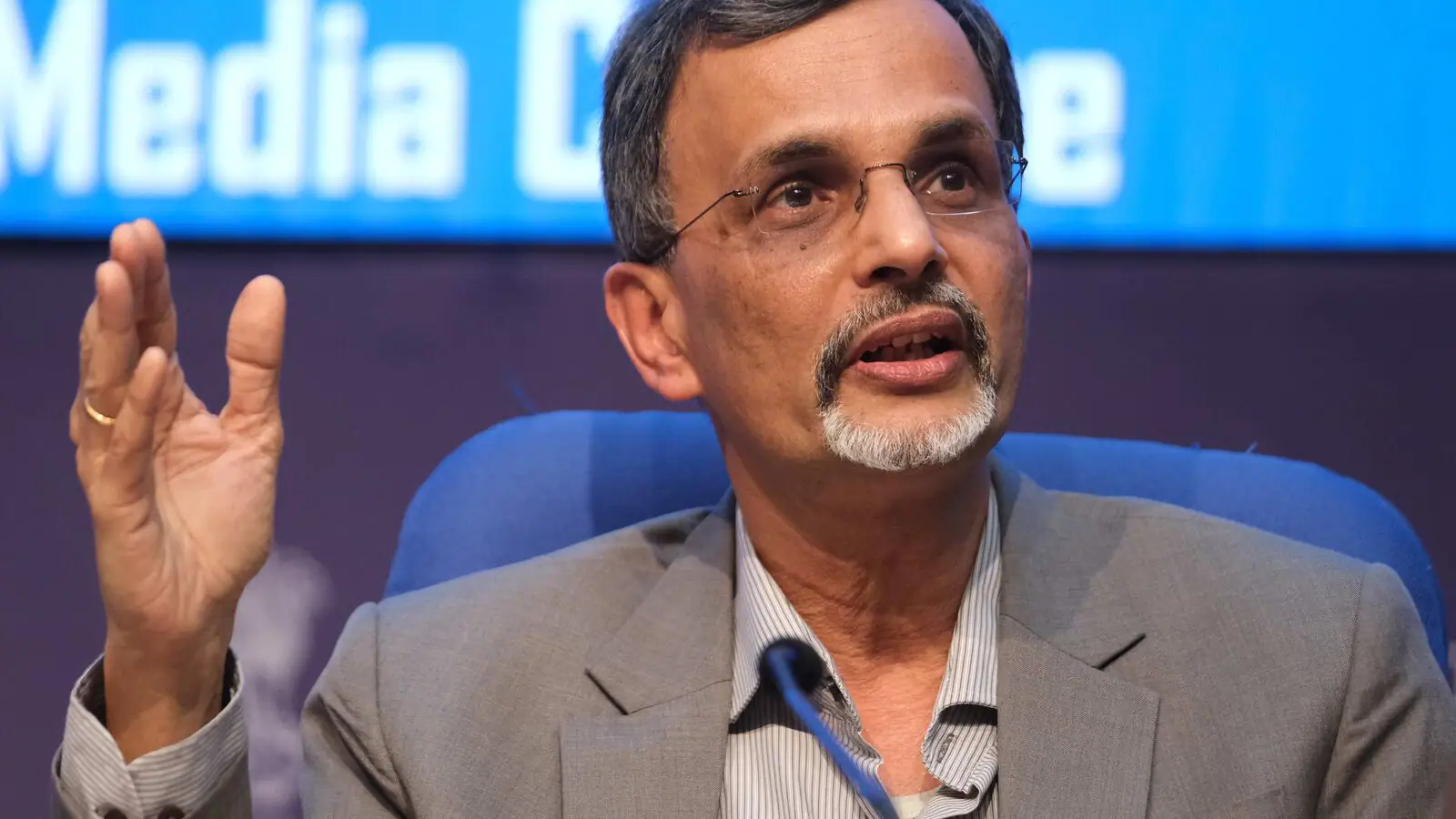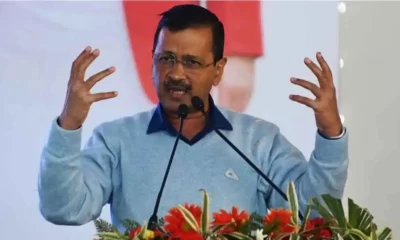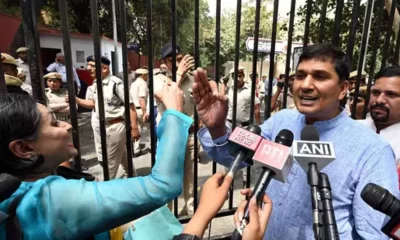Economy news
Significance of regulation in real estate sector post RERA and IBC amendments

The real estate sector is one of the most important sectors for the economy as it is a second largest employer in India after agriculture and is slated to grow by 30% in next few years. The real estate sector comprises four sub sectors – housing, retail, hospitality, and commercial. As per the available data The Indian real estate market is expected to touch US$ 180 billion by 2020. Housing sector is expected to contribute around 11 per cent to India’s GDP by 2020. Retail, hospitality and commercial real estate are also growing significantly owing to push to create much-needed infrastructure.
The principal players in the sector are developers and buyers. For a long time there was a perception amongst buyers and predominantly amongst home buyers that real estate transactions including laws, regulations and agreements were lopsided and heavily in favour of the developers. In addition the legal process in case of any breach or dispute favoured developers mostly owing to delays in courts leading to loss of time and increased costs for the buyers. Increased defaults by the developers particularly in relation to housing mainly due to lack or regulation and enforcement mechanisms led the government to enact The Real Estate (Regulation and Development) Act, 2016 (under which Real Estate Regulatory Authority (“RERA”) was created with the aim to create a more equitable and fair transaction market between the developers and the buyers. It was thought that increased transparency would lead to increase in investments and overall growth of the sector.
The Act mandates the states to create their own Real Estate Authorities and Appellate Authorities for laying down of state specific real estate regulations and quick disposal of complaints in relation to real estate sector. Under RERA regime the projects are required to be registered with state RERA and all information about the project and the developer is available on the website of RERA. This ensures transparency so that the consumers can make informed decisions. Other significant provisions relate to deposit of funds collected in an escrow account and non-diversion of funds collected from buyers of one project to another project. The law also envisages are dispute settlement mechanism to ensure quick resolution of disputes to the benefit of all stakeholders.
In addition to RERA another major legislative intervention with respect to the Real Estate Sector has been inclusion of Home Buyers as a class of the financial creditors in any action under the Bankruptcy and Insolvency Code, 2016 (the “Insolvency Code”). In the context of insolvency proceedings of a company involved in real estate development, the amendment results in homebuyers being treated as financial creditors at par with the banks and financial institutions.
 Due to the amendment, homebuyers can initiate insolvency proceedings against real estate developers and would have representation on the committee of creditors which decides on the resolution plan for the defaulting company and would be treated as financial creditors in case of liquidation of the real estate developer.
Due to the amendment, homebuyers can initiate insolvency proceedings against real estate developers and would have representation on the committee of creditors which decides on the resolution plan for the defaulting company and would be treated as financial creditors in case of liquidation of the real estate developer.
It will be interesting to watch the developments in Jaypee insolvency process wherein under the directions of the Supreme Court the homebuyers will be part of the Committee of Creditors which will oversee the insolvency process. In addition recently an insolvency petition has been filed by the New Delhi based consulting firm SGM Webtech Pvt. Ltd in the National Company Law Tribunal seeking to initiate insolvency proceedings against Boulevard Projects Pvt. Ltd, a Noida-based real estate developer.
Post RERA and the changes in the Insolvency Code, the regulation of the Real Estate Sector has increased manifold. RERA has increased transparency in the real estate sector and also ensured quick resolution of disputes. The fact that the buyers can proceed under the Insolvency Code is a huge step forward for safeguarding the interests of the buyers as now they can initiate the insolvency resolution process against the developer company where the end result could be the change of the ownership of the developer company to the highest bidder or liquidation of the company in case no feasible buyer comes forward. This means the promoters of the real estate company losing control of the entity created by them.
The regulatory changes have brought in much needed investor confidence in the real estate sector which would lead to increased investments. This increased regulation should be welcomed by the real estate sectoras it is an opportunity for the developers to change the public perception towards the sector. That said the regulatory landscape is still in infancy and it will be interesting to see how the institutions evolve over a period of time.
—By Rajat Prakash
(Managing Partner, Athena Legal)
Courtsey- realtyplusmag.com
Economy news
Financial changes effective from September, Aadhaar update, nomination deadline for demat account
Some changes will take effect on the first day, while others will be implemented later in the month. This list will affect people’s finances.

In the month of September, there are many changes occurring, particularly in the financial sector. Some changes will take effect on the first day, while others will be implemented later in the month. This list will affect people’s finances.
The deadline to update an individual’s Aadhaar card details for free is quickly approaching. The Unique Identification Authority of India (UIDAI) extended the deadline from June 14 to September 14, 2023. This scheme is specifically for citizens who obtained their Aadhaar card 10 years ago and have yet to update their information. People can take this opportunity to update their details before it’s too late.
The nomination process for trading and demat accounts is mandatory for holders and the deadline for this has been extended by the Security and Exchange Board of India (SEBI). The account holders have to make nominations or opt out of it before September 30.
People will need to update and link of Aadhaar identity documents with PAN cards. Those who have credit cards from Axis Bank will also experience the effects of these changes starting this month.
As per the updated terms and conditions, Axis Bank’s Magnus credit card users need to pay higher fees. The annual fee has been increased to Rs 12,500. Also, the benefits associated with the card will be updated.
This month marks the final opportunity for individuals to exchange Rs 2,000 notes. As stated by the Reserve Bank of India (RBI) in May, individuals may exchange or deposit these notes into their bank accounts before the specified deadline.
The central bank has specified that individuals may exchange or deposit for lower denomination notes, up to Rs 20,000 at a time, until September 30th. Interestingly, even after the deadline, Rs 2,000 notes will still be considered valid tender.
Starting from the current financial year, the Ministry of Finance has made it mandatory to provide both Permanent Account Number (PAN) and Aadhaar card information when making investments in small saving schemes such as the Public Provident Fund (PPF), Post Office Saving Scheme, and Senior Citizens Saving Scheme (SCSS). Existing subscribers must submit their Aadhaar number before September 30th, or their accounts will be frozen.
Economy news
India will remain on similar growth curve till 2030, expect well behaved inflation this fiscal: CEA
Chief Economic Adviser (CEA) V Anantha Nageswaran on Tuesday projected that India’s economy was poised to do better and expected to grow at 6.5-7 percent till the end of the decade.

Chief Economic Adviser (CEA) V Anantha Nageswaran on Tuesday projected that India’s economy was poised to do better and expected to grow at 6.5-7 percent till the end of the decade.
Nageswaran, while talking to the media after tabling of the Economic Survey in Parliament by Finance Minister Nirmala Sitharaman, said that the inflation is likely to be “well behaved” in the coming fiscal year barring any unforeseen factors.
According to the Economic Survey prepared by the CEA, RBI projection of retail inflation at 6.8 per cent in the current fiscal is neither too high to deter private consumption, nor too low as to weaken inducement to invest.
The Economic Survey for the current fiscal also state that the Indian economy is expected to hit a minor slow down to 6.5 percent in April 2023 but will continue to remain the fastest-growing major economy in the world owing to its ability to better deal with challenges faced by the global economy.
The CEA maintained that the projected growth rate would remain stable as long as oil prices stayed below 100 dollars per barrel. He also pointed out that the quality of public expenditure has gone up and the government has become more transparent with budget deficit numbers, adding that an increased transparency is being witnessed in public procurement.
Read Also: Finance Minister Nirmala Sitharaman tables Economic Survey 2023, check highlights here
Nageswaran stressed that credit growth is picking up across sectors, and credit to MSMEs has grown at 30 per cent since January 2022, while NPAs in NBFCs is lower than what it was 15 months ago.
The CEA revealed that India is well ahead of its targets for renewable energy mix.
Earlier on Tuesday, the International Monetary Fund in its January update of the World Economic Outlook called India as a bright spot in an otherwise gloomy world economy which, together with China, will account for half of the global growth in 2023, compared to the US and Euro area, who account for just a 10th of the world’s growth.
The IMF report had made almost similar projections to the Economic Survey tabled by the government. It has projected India’s growth to dip slightly from 6.1 percent to 6.8 percent during the current fiscal year ending on March 31. IMF also expects some minor slowdown in the Indian economy in the next fiscal year.
Air India Pee Gate: Delhi court grants bail to accused Shankar Mishra
Visakhapatnam to be the new capital of Andhra Pradesh, says CM Y S Jagan Mohan Reddy
Economy news
India a bright spot amid projected decline in global growth: IMF
The International Monetary Fund (IMF) has projected India’s growth to dip slightly from 6.1 percent to 6.8 percent during the current fiscal year ending on March 31. IMF also expects some minor slowdown in the Indian economy in the next fiscal year.

The International Monetary Fund (IMF) has projected India’s growth to dip slightly from 6.1 percent to 6.8 percent during the current fiscal year ending on March 31. IMF also expects some minor slowdown in the Indian economy in the next fiscal year.
According to the January update of the World Economic Outlook released by global fiscal body on Tuesday, global growth is projected to fall from a projected 3.4 percent in 2022 to 2.9 percent in 2023, then rise to 3.1 percent in 2024.
Pierre-Olivier Gourinchas, Chief Economist and Director, Research Department of the IMF said in a statement that the IMF’s projections for India remain unchanged from its October update as they predict a 6.8 percent growth curve for the Indian economy for the current fiscal and an expected minor dip to 6.1 percent in the next fiscal.
According to the IMF World Economic Outlook, the slowdown is largely driven by external factors, adding that the India’s growth will once again see an upward curve and go up to 6.8 percent in 2024 due to resilient domestic demand despite external factors.
The report expects a rise in growth in developing Asian nations in 2023 and 2024 to 5.3 percent and 5.2 percent, respectively, after the slowdown in 2022 to 4.3 percent.
For the first time in the last four decades, China’s growth fell below the global average in the fourth quarter of 2022 which saw a 0.2 percentage point downgrade, settling at 3.0 percent. However, China’s growth is expected to rise to 5.2 percent in 2023 and fall to 4.5 percent in 2024 before settling at below 4 percent over the medium term amid declining business dynamism and slow progress on structural reforms.
Read Also: Railways cancel over 350 trains, divert route of 16 trains, check full list here
Gourinchas pointed out that emerging market economies and developing economies are already on the way up and have seen a slight rise in growth for the region from 3.9 percent in 2022 to 4 percent in 2023.
He stressed that India and China combined account for almost 50 percent of world growth in 2023, adding that IMF’s positive view on India’s growth curve remains unchanged.
Gourinchas in a blog post termed India as a bright spot which, together with China, will account for half of the global growth in 2023, compared to the US and Euro area, who account for just a 10th of the world’s growth.
Gourinchas also forecasted a much more pronounced slowdown for advanced economies with a decline from 2.7 percent last year to 1.2 percent and 1.4 percent this year and next.
Nine out of 10 advanced economies will likely decelerate, he added.
He predicted that the US’ growth will slow to 1.4 percent in 2023 as Federal Reserve interest-rate hikes work their way through the economy. Euro area conditions are more challenging despite signs of resilience to the energy crisis, a mild winter, and generous fiscal support, he said.
Haryana man killed in road mishap, police say; family claims beaten to death by cow vigilantes
Peshawar suicide bombing: Death toll rises to 83, over 150 wounded
-

 Entertainment23 hours ago
Entertainment23 hours agoBollywood stars Vidya Balan, Kartik Aaryan, Pratik Gandhi, Ileana D’Cruz, Mouni Roy, Radhika Madan, Mrunal Thakur attend Do Aur Do Pyaar premiere
-

 Cricket news21 hours ago
Cricket news21 hours agoHappy Birthday KL Rahul: Suniel Shetty wishes son-in-law KL Rahul on his 32nd birthday
-

 2024 Lok Sabha Elections4 hours ago
2024 Lok Sabha Elections4 hours agoPrime Minister Narendra Modi urges citizens to vote in record numbers as voting for first phase of Lok Sabha elections begins on 102 seats across India
-

 India News20 hours ago
India News20 hours agoEnforcement Directorate seizes Shilpa Shetty’s husband Raj Kundra’s properties worth Rs 97 crore
-

 India News19 hours ago
India News19 hours agoEnforcement Directorate says Arvind Kejriwal is deliberately eating mangoes, sweets, taking sugar with tea to increase his blood sugar level and create ground for bail
-

 2024 Lok Sabha Elections2 hours ago
2024 Lok Sabha Elections2 hours agoKamal Haasan, Rajinikanth, Vijay Sethupathi, Dhanush vote in Chennai
-

 2024 Lok Sabha Elections3 hours ago
2024 Lok Sabha Elections3 hours agoLok Sabha elections 2024: Google Doodle marks the start of polls with index finger voting symbol
-

 2024 Lok Sabha Elections2 hours ago
2024 Lok Sabha Elections2 hours agoLok Sabha elections 2024: TMC, BJP workers clash in West Bengal’s Cooh Behar ahead of voting




















